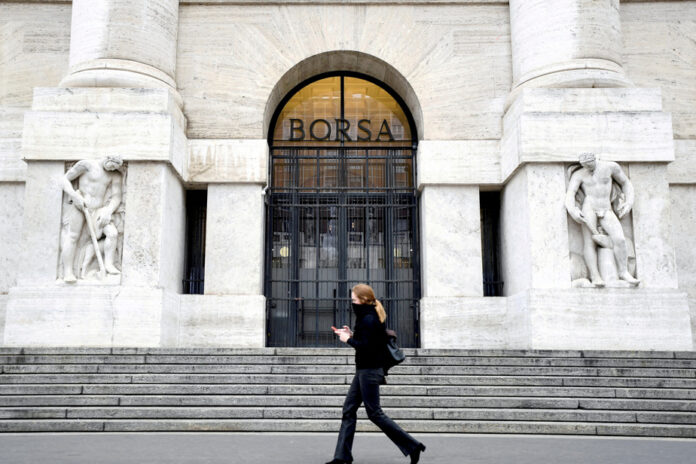(Paris) Signs of concern about the economic slowdown affected stock markets on Wednesday, caught up in renewed caution.
In Tokyo, the flagship Nikkei index dropped 1.68%, its biggest one-session drop since March 14.
The Hong Kong, Shanghai and Shenzhen stock exchanges were closed on Wednesday due to a public holiday in China.
In Europe, indices were treading water in Paris (-0.06%), Frankfurt (-0.16%), London (0.14%) and Milan (-0.16%) at 7:40 a.m. MT .
After the episode of dread experienced by the banking sector in March, the markets have regained strength by betting on the probability of an imminent end to the rate hike cycles of the American central bank.
The rise in the markets continued at the start of the week despite a rise in crude oil prices triggered on Monday by the announcement of production cuts by several major hydrocarbon exporting countries, reviving the inflationary risks.
But US markets fell on Tuesday after several statistics illustrating the economic slowdown fueled fears of recession, such as the drop in industrial orders or that of the labor market where the number of job vacancies fell in February to the lowest level since May 2021.
This decline in tensions on the labor market led to purchases of US Treasury bonds, investors believing that the US central bank (Fed) could end its monetary tightening sooner.
In this context, job creations in the American private sector in March (ADP/Stanford Lab survey) expected during the day will in turn be closely watched before the official report on employment from the Department of Labor scheduled for Friday.
“Weaker-than-expected ADP data will clearly be welcomed by policy makers within the Fed and could lead to further lower US Treasury yields, while stronger-than-expected ADP data could bring the proponents of a more aggressive monetary policy back to the fore,” writes Ipek Ozkardeskaya, analyst at Swissquote Bank.
In this climate of growth concerns, investors will also take note of the PMI leading indicators in the euro zone and the ISM services index for the month of March in the United States.
In addition, market participants could be disturbed by the stronger than expected increase in the key rate of the central bank of New Zealand (RBNZ) the day after a pause decided by the Australian Reserve Bank, which this time refrained from raising its rates.
The RBNZ raised its rate by 50 basis points, while the market expected a rise of 25 points.
The move “sweetened expectations” of more dovish Fed policy, Ozkardeskaya notes.
The bond market reflected this with government bond yields rising again: the US ten-year rate rose to 3.36% from 3.33% on Tuesday evening and its German counterpart (Bund) advanced to 2.28% versus 2.25%.
The price of gold, considered a safe haven in uncertain times, rose above $2,000 an ounce for the first time in a year: around 3:20 a.m. EST, it was worth $2,024 an ounce. ‘ounce.
The yen continued to strengthen against the dollar, at a rate of one dollar for 131.58 yen around 3:20 a.m. (ET) against 131.71 yen on Tuesday at 5 p.m. (ET).
The euro traded at 144.19 yen against 144.27 yen the day before, and was worth 1.0964 dollars against 1.0953 dollars on Tuesday.
On the oil market, the barrel of American WTI rose 0.56% to 81.16 dollars around 3:20 a.m. (Eastern time) and that of Brent from the North Sea took 0.36% to 85, $25.
Bitcoin was up 0.81% at $28,488.















